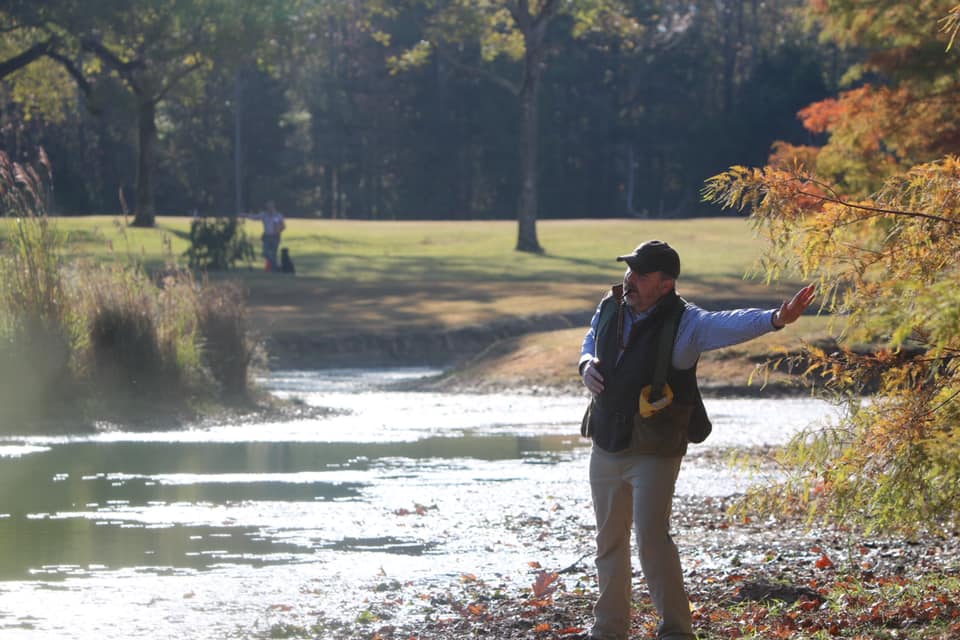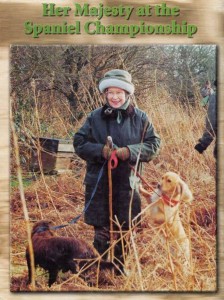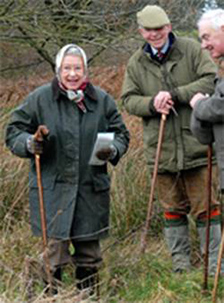The Drive By

Last summer at Wildrose Colorado, I developed a training exercise which combined a couple of Wildrose Way elements specifically to address issues commonly experienced with retrievers nearing the end of basic gundog training cycle or even for seasoned dogs in need of tune up. The training solution is called “Drive By.”
The technique is designed to develop the retrievers’ skills to drive past short bumpers (and later birds) to pick long ones or to stop and handle to falls in cover when driving out for the long bird. The exercise combines trailing memories with stop to the whistle and casting into cover, alternating with each pick. Let’s walk through the process.
The Drive By
The drill begins with a trailing memory single lining in open ground: short cover woodlands, plowed ground, so the bumper is almost a seen. Imagine a home plate and second base of a baseball diamond.
The scenario also combines two scented bumpers scattered in close proximity to each other off the center (pitcher’s mound) of the line. We will mark these 2 bumpers at either a 3rd base or 1st base fall area.
The training objective is to develop a dog’s interdependence with the handler forgoing the dog’s “opinion” as to which bumper should be picked. The willingness to hold the line despite the short bird suction or stop and cast into the cover, ie:
1. Line past the off-set memories (diversions/suction) for a pick of the long bumper
2. Or to stop while lining to the long memory and handle directly into cover to a shorter memory.
The core principle is to keep the dog guessing as to which command will be given by the handler. If a dog is given direction and they independently select another action, then the handler has the opportunity to refocus the dog on the correct command. The dog does not get to decide.
Every other retrieve is a lining memory followed by stopping to casting from the trailing memory line into different environmental factors, such as cover, marsh, shallow still water or even to negotiate an obstacle like a fence or ditch. Whatever the selection is for the short memories for hand signals the location should require a hunt for recovery success. So, you have a bit of diversity in this exercise, the long trailing memory is set for an easy find while the bumpers for casting off the line incorporate a physical challenge and/or nose work.
The Set Up
Select an area of open ground. Again, it could be short grass, clear woodlands, a pond levy, a plowed field, a place to set up a long training memory single. To the side of the line should be thick cover, still water, marsh grass or woods, etc.
Place a bumper at what would be home base which will be the first long memory. Walk the line of the trailing memory from home plate (using the old baseball diamond description to help explain) toward second base. Halfway between home and second, toss out two scented bumpers deep into the cover as memories to the side of the line from what would the location of the pitcher’s mound. The dog marks the falls. The bumpers should be in close proximity but not piled. The location for both bumpers placed is either first base or third base, 90 degrees to the line. Both bumpers are scattered in the same area. Continue walking out to second base, now the drill is set.
The Exercise Begins
- Set the dog to line for the long trailing memory (from 2nd to home) passing the double memories midway down the line without stopping or handling. “No” the dog off the short birds and pick the long memory.
- Next, place the retrieved bumper at second base and heel the dog with you to home plate.
- Line the dog to the second base memory just placed then stop the dog on the whistle as he approaches midway on the line (pitcher’s mound). This stop is 90 degrees to where the bumpers are hidden in the cover.
- Hold the dog’s attention at stop for at least 5 seconds, then cast straight through the obstacle or into the cover for the hidden bumpers. There are only two scatters, so we have the opportunity for a bit of nose work.
- After delivery, line the dog to pick the trailing memory at second base. Next, drop a memory at home and proceed with the retriever to second base. Once in place, line for the home base memory, then stop the dog for a cast into cover to make the second short pick.
- Finally, receive the bumper then line the dog to retrieve the remaining long trailing memory at home plate.
 Considerations
Considerations
If the dog decides on his own to divert from the given line without instructions, stop immediately and use a primary reset (See page 164, Sporting Dogs and Retriever Training, the Wildrose Way.) Recall, reset the line and rerun. Do not try to handle out of the mistake.
If the dog casts correctly but cannot negotiate the obstacle or locate a find on the hunt, return to the basic fundamentals of lining through barriers and hunting cover in separate sessions.
Ensure that every other retrieve alternates between a line or a handle. Overhandling will result in other problems: lack of confidence, anticipating the command, causing a dog to pop (stop and look for assistance) or spinning.
Modifications
As with many Wildrose Way methods, this one, too, is flexible. One can make the exercise more challenging by turning the entire setup 90 degrees after the final pick of the initial drill. Simply re-create the exercise and set up a new run. Imagine a square after the last trailing memory is achieved. Turn the setup 90 degrees and set this location as home. Drop the memory. Walk the trailing memory line out and toss in two memories in cover at the half-way point. Proceed to second base and set the line to make the long bird pick at home base, continue with each step outlined above.
 Developmentally Appropriate
Developmentally Appropriate
Obviously, a retriever should have a clear understanding of lining memories, casting, whistle stops and experienced hunting cover as well as negotiating obstacles before one can “chain” these skill sets into a concept like “Drive By.” Nothing is learned through failure. You can challenge a dog for sure but train, don’t test.
Drive By is an excellent refinement exercise to complete a dog’s basic gundog training or to “polish” a trained retriever’s experience for upland and waterfowl.
The Wildrose Way always emphasizes developing a retrieving partnership between the dog and handler. The goal is to become a proficient game recovery team. Drive By is just another small step to assist one’s journey to achieve Gentleman’s Gundog ecstasy.



